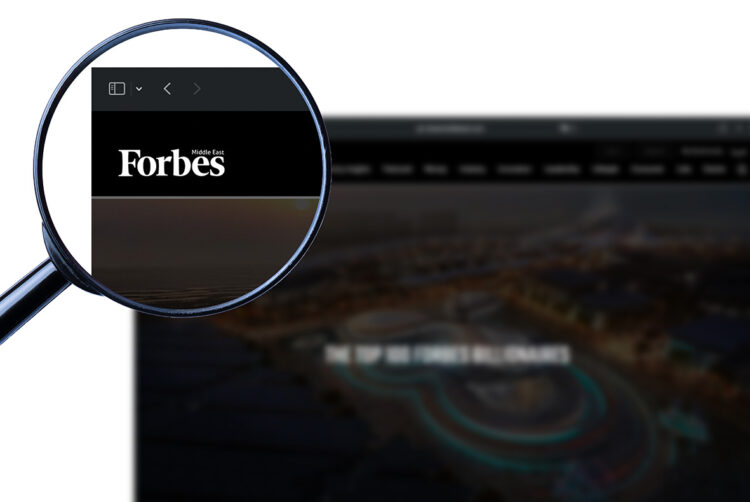Forbes’ seven-year MFA scheme shows how deep the rot runs in online advertising

Opinion: 100% Media 0% Nonsense
If global publishers feel the need to spoof their own websites to sell garbage ad inventory, it means the state of online advertising is in even worse shape than many realise, writes the editor-in-chief.
“Stop buying crap.”
That’s the sage advice from Ozone’s Danny Spears in our feature on so-called made-for-advertising (MFA) practices last week.
This article was prompted by concerns from legitimate publishers that they, too, could be labelled as MFA. Any publisher that wants to build sustainable revenue from online advertising shouldn’t want to be associated with MFA sites, which are typically riddled with internet trash: bots, spyware, huge number of ads on web pages and clickbait content.
And then Forbes-gate happened. Oh dear.
Everyone complains but nothing changes
According to online ad transparency startup Adalytics, one of the world’s most well-known business publications was essentially running its own MFA operation.
Since 2017, Forbes was using tactics that have long been condemned by anyone who cares about quality media. And if global publishers feel the need to do this, it means the state of online advertising is in even worse shape than many in this industry probably realise.
Instead of ads being placed on www.forbes.com, they were shoved on to www3.forbes.com, a website hidden from Google search and accessible purely by people who succumbed to clickbait from other sites via Outbrain and Taboola.
And when we say “ads”, the advertisers reportedly involved were major brands as well as major agencies. The Wall Street Journal, which broke the story after being given Adalytics’ report in March, reported: “All six major ad agency holding companies — WPP, Omnicom, Publicis, Interpublic, Havas and Dentsu — bought ads that ran on that site. Those brands and ad holding companies either declined to comment or didn’t respond to requests for comment.”
Given the length of time of this Forbes MFA operation had been running — seven years! — and given the actors involved (major advertisers and their agencies), this was not some fly-by-night operation. This so-called domain-spoofing enterprise was essentially standard practice. Welcome to online advertising in 2024: the land where everyone complains but nothing changes.
A major UK publisher’s sales chief recently told me that they would be lucky to get a penny’s yield off of a web page, even as the owner of one of the most popular websites in the country. The www3.forbes.com subdomain had the ability to serve over 200 ads within a matter of minutes.
Greed over grace
There are lots of blame to go around, but brands are ultimately paying for it through their marketing budgets.
In a previous column, I suggested that the industry simply doesn’t care enough to do the hard work necessary to root out ad fraud. Imagine how much time and money has gone into creating the complex adtech infrastructure that underpins online advertising today; then imagine how much time has gone into fraud detection and compliance.
If there’s a battle between trying to make as much money as possible and trying to be as ethical as possible, you can be sure that greed will always triumph over grace.
There has long been a suspicion that, when it comes to wasted adspend and contributing to ad fraud, many marketers only care about being seen to do the right thing rather than actually doing the right thing. As one US digital media agency CEO remarked about the Forbes affair on LinkedIn: “There is an entire fraud detection industry that earned well over $1bn in revenue in 2023, includes three public companies, yet none detected this!”
The clear implication is that marketers just want to cover themselves by saying “we work with an ad verification company” without actually investigating whether their media is fraud-free or spoof-free.
Rather like wearing a motorcycle helmet without actually ever wondering whether it fits your head properly.
My advice to CFOs: Sound the alarm
And that’s because chief marketing officers (CMOs) are, unfortunately, not incentivised to tell their chief financial officers (CFOs) how much money has been wasted.
Instead, they’re generally incentivised to show how wonderfully efficient they are, meaning the temptation to cheaply reach people online with low-quality media is irresistible. Except they’re not cheaply reaching anyone. Or, in Forbes’ apparent case, they’re not reaching the people they paid to reach. And yet, according to Adalytics, they paid the same prices.
My message to any CEO or CFO: the next time a CMO tells you much reach their online campaigns got, and then justifies that with how many clicks they got compared with how low their CPMs were, you should literally sound an alarm.
Hence why Adalytics has achieved so much notoriety despite only having been founded four years ago — there is a gap in the market to uncover such flagrant wastage in digital media.
The phrase “shooting fish in a barrel” suddenly comes to mind too.
 Omar Oakes is editor-in-chief of The Media Leader
Omar Oakes is editor-in-chief of The Media Leader
100% Media 0% Nonsense is a weekly column about the state of media and advertising. Make sure you sign up to our daily newsletter to get this column first in your inbox every Monday, as well as key updates with what’s happening at The Media Leader and our upcoming events.
The BBC has touched the third rail by launching UK ads. But why?




